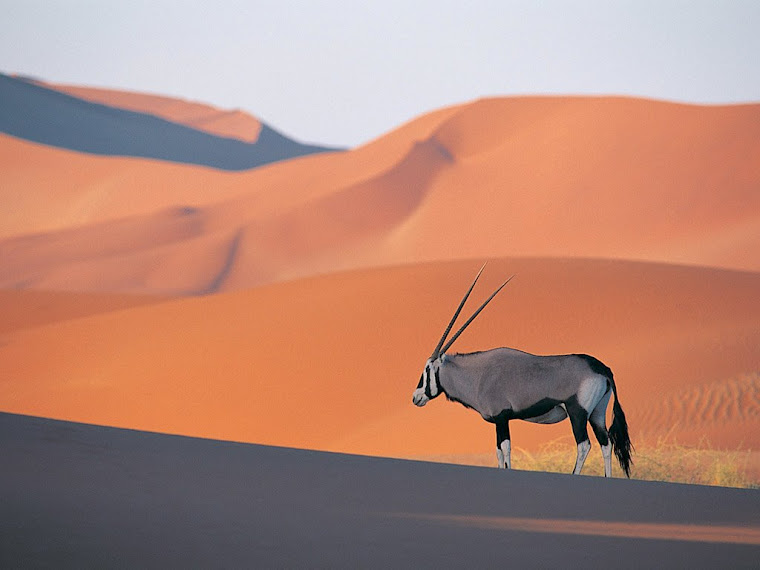I often wonder about matters of the ancient world. They fascinate me, I guess, because they allow my imagination to think of what could have been true. For example, around 70,000 years ago, a volcanoe erupted in the Indonesian area of the world. Eruptions aren't always a big deal. We see them on TV in modern times. But this one was different.
This eruption was so large, powerful, and long-lasting that what happened with the human-made bomb at Hiroshima looked like child's play. The blast sent plumes of sulfur and other elements into the atmosphere for so long and so high that a 10-year darkness was estimated to have hovered over the earth. That's a long time for no photosynthesis for plants, so most of them died. All you have to do is follow the progression from there. Light is required for plant life in the ocean as well, for the most part. The bottom line was that there was no food for humans after a while, at least not for the number of humans on the earth at the time.
But, not all humans died. Scientists are not sure where the humans that survived lived, but the humans that survived were but a small portion of those that existed before the eruption. In addition, geneticists say that humans were much more diverse than they are now. I would loved to have lived at that time to see a more diverse population. Were there more hair colors, skin tones, eye colors, height delimitations, shapes of bodies, etc. than today? If it is generally true that races gets taller over (lengthy) time, I wonder if it was an age of the little people. Or was it an age of giants whose race had lived 50,000 years before that, but they just couldn't make it because they required too much food? Was there a yellowish or yellow-green skin tone besides the standard ones we see today? Did humans have as much variety in hair color as fish in the sea have stripes and colors in their scales and skin? Some humans today have a whole lot of trouble growing facial hair (in males). Were some of the humans before the eruption with more or less hair on their faces?
I don't know the answer to any of those questions. But it's an exercise in wonder. It doesn't take much to look around the world and find areas full of wonder. Mountains do that for me. Pre-history does it. Space allows for wondrous thoughts of imagination. And it is when I see something full of wonder that I become grateful for the day and age that I live in. And when I am more grateful, I become less dissastisfied. That releases me to live more fully. Of course, there's always one area of dissatisfaction or another, it seems, that crops up. But, that always keeps me from living in such a wonder-filled world that I miss the reality of the present. But, tonight I am wondering about the world of 70,000 years ago and all that it held. And, I am grateful.
This eruption was so large, powerful, and long-lasting that what happened with the human-made bomb at Hiroshima looked like child's play. The blast sent plumes of sulfur and other elements into the atmosphere for so long and so high that a 10-year darkness was estimated to have hovered over the earth. That's a long time for no photosynthesis for plants, so most of them died. All you have to do is follow the progression from there. Light is required for plant life in the ocean as well, for the most part. The bottom line was that there was no food for humans after a while, at least not for the number of humans on the earth at the time.
But, not all humans died. Scientists are not sure where the humans that survived lived, but the humans that survived were but a small portion of those that existed before the eruption. In addition, geneticists say that humans were much more diverse than they are now. I would loved to have lived at that time to see a more diverse population. Were there more hair colors, skin tones, eye colors, height delimitations, shapes of bodies, etc. than today? If it is generally true that races gets taller over (lengthy) time, I wonder if it was an age of the little people. Or was it an age of giants whose race had lived 50,000 years before that, but they just couldn't make it because they required too much food? Was there a yellowish or yellow-green skin tone besides the standard ones we see today? Did humans have as much variety in hair color as fish in the sea have stripes and colors in their scales and skin? Some humans today have a whole lot of trouble growing facial hair (in males). Were some of the humans before the eruption with more or less hair on their faces?
I don't know the answer to any of those questions. But it's an exercise in wonder. It doesn't take much to look around the world and find areas full of wonder. Mountains do that for me. Pre-history does it. Space allows for wondrous thoughts of imagination. And it is when I see something full of wonder that I become grateful for the day and age that I live in. And when I am more grateful, I become less dissastisfied. That releases me to live more fully. Of course, there's always one area of dissatisfaction or another, it seems, that crops up. But, that always keeps me from living in such a wonder-filled world that I miss the reality of the present. But, tonight I am wondering about the world of 70,000 years ago and all that it held. And, I am grateful.


No comments:
Post a Comment